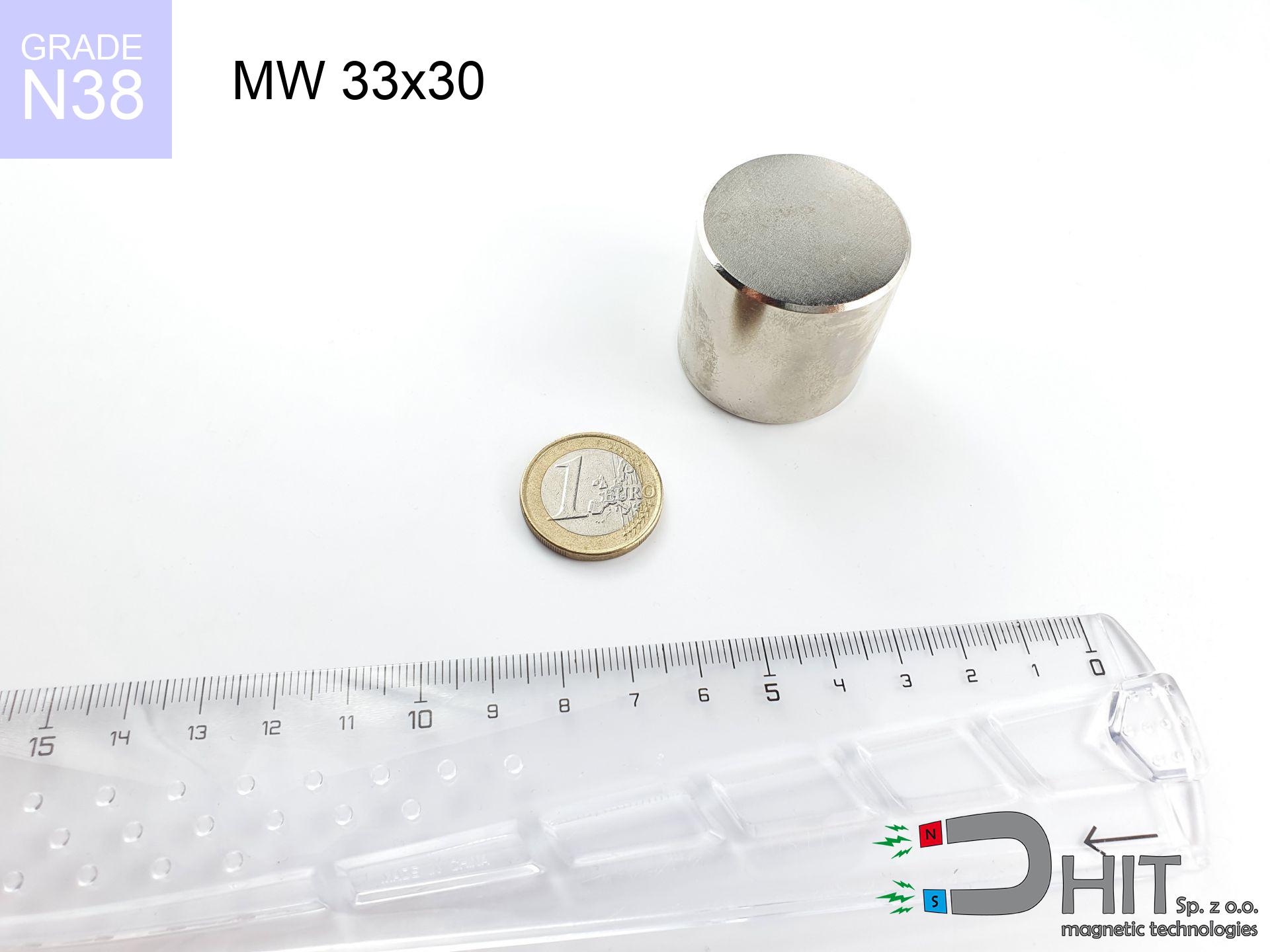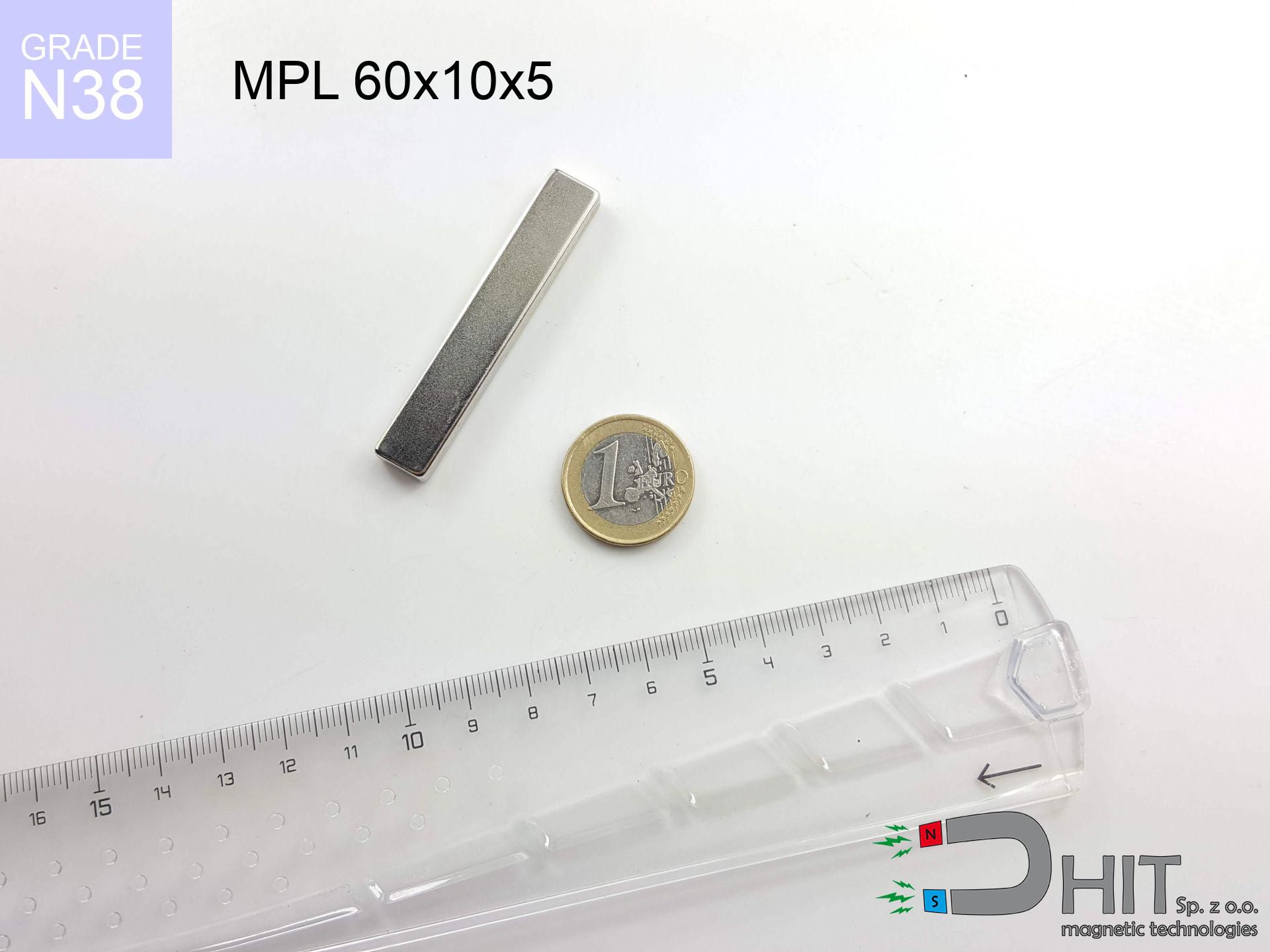UMP 75x24 [M8+M10] GW F 200 kg - search holder
search holder
Catalog no 210336
GTIN/EAN: 5906301813958
Diameter Ø
75 mm [±1 mm]
Height
24 mm [±1 mm]
Weight
900 g
Load capacity
280.00 kg / 2745.86 N
Coating
[NiCuNi] Nickel
200.00 ZŁ with VAT / pcs + price for transport
162.60 ZŁ net + 23% VAT / pcs
bulk discounts:
Need more?Not sure which magnet to buy?
Give us a call
+48 22 499 98 98
otherwise drop us a message through
form
through our site.
Force and appearance of magnets can be verified using our
magnetic mass calculator.
Same-day processing for orders placed before 14:00.
💡 Guide: How to choose a decent magnet and not get ripped off?
Instead of believing fairy tales on YouTube with tests on uncertified equipment, see what really determines your magnet's power:
- 📏 Magnet thickness in the casing (min. 10mm) – This is what matters most! Thin magnets are weak. Thanks to the 1cm thickness of N52 neodymium, your magnet "sees" metal even through thick rust and mud.
- 🛡️ Armored protection (Black Epoxy) – Forget about rust. This coating doesn't chip when hitting rocks and protects the magnet in water much better than regular nickel, which fails quickly.
- 🧲 Eyelets that don't steal power – Made of special non-magnetic steel, so they don't stick to the magnet and don't block the force. Important: mount only one eyelet at a time! Using 3 at once is a mistake that weakens the magnet.
- 🧶 Certified rope (min. 8mm) – You gain the certainty that your gear won't stay at the bottom. It's thick and comfortable, so it doesn't cut your fingers when pulling out heavy scrap metal.
- 🚀 Our advantage: We are the only ones combining the strongest N52 neodymium (10mm thick) with non-magnetic eyelets. This is real power and durability you won't find anywhere else.
Invest in solid equipment and enjoy the results!
UMP 75x24 [M8+M10] GW F 200 kg - search holder
Specification / characteristics UMP 75x24 [M8+M10] GW F 200 kg - search holder
| properties | values |
|---|---|
| Cat. no. | 210336 |
| GTIN/EAN | 5906301813958 |
| Production/Distribution | Dhit sp. z o.o. |
| Country of origin | Poland / China / Germany |
| Customs code | 85059029 |
| Diameter Ø | 75 mm [±1 mm] |
| Height | 24 mm [±1 mm] |
| Weight | 900 g |
| Load capacity ~ ? | 280.00 kg / 2745.86 N |
| Coating | [NiCuNi] Nickel |
| Manufacturing Tolerance | ±1 mm |
Physical properties of sintered neodymium magnets Nd2Fe14B at 20°C
| properties | values | units |
|---|---|---|
| Vickers hardness | ≥550 | Hv |
| Density | ≥7.4 | g/cm3 |
| Curie Temperature TC | 312 - 380 | °C |
| Curie Temperature TF | 593 - 716 | °F |
| Specific resistance | 150 | μΩ⋅Cm |
| Bending strength | 250 | Mpa |
| Compressive strength | 1000~1100 | Mpa |
| Thermal expansion parallel (∥) to orientation (M) | (3-4) x 106 | °C-1 |
| Thermal expansion perpendicular (⊥) to orientation (M) | -(1-3) x 10-6 | °C-1 |
| Young's modulus | 1.7 x 104 | kg/mm² |
Chemical composition
| iron (Fe) | 64% – 68% |
| neodymium (Nd) | 29% – 32% |
| boron (B) | 1.1% – 1.2% |
| dysprosium (Dy) | 0.5% – 2.0% |
| coating (Ni-Cu-Ni) | < 0.05% |
Sustainability
| recyclability (EoL) | 100% |
| recycled raw materials | ~10% (pre-cons) |
| carbon footprint | low / zredukowany |
| waste code (EWC) | 16 02 16 |
Other products
Pros as well as cons of Nd2Fe14B magnets.
Benefits
- They retain full power for around 10 years – the drop is just ~1% (based on simulations),
- Neodymium magnets prove to be highly resistant to magnetic field loss caused by external magnetic fields,
- A magnet with a smooth gold surface is more attractive,
- They show high magnetic induction at the operating surface, making them more effective,
- Made from properly selected components, these magnets show impressive resistance to high heat, enabling them to function (depending on their form) at temperatures up to 230°C and above...
- Possibility of accurate creating and modifying to atypical conditions,
- Fundamental importance in modern industrial fields – they serve a role in HDD drives, electromotive mechanisms, medical devices, as well as complex engineering applications.
- Compactness – despite small sizes they offer powerful magnetic field, making them ideal for precision applications
Cons
- They are prone to damage upon too strong impacts. To avoid cracks, it is worth securing magnets in special housings. Such protection not only shields the magnet but also improves its resistance to damage
- Neodymium magnets lose their strength under the influence of heating. As soon as 80°C is exceeded, many of them start losing their force. Therefore, we recommend our special magnets marked [AH], which maintain stability even at temperatures up to 230°C
- Magnets exposed to a humid environment can rust. Therefore during using outdoors, we recommend using waterproof magnets made of rubber, plastic or other material resistant to moisture
- We suggest casing - magnetic mount, due to difficulties in realizing threads inside the magnet and complicated shapes.
- Potential hazard to health – tiny shards of magnets pose a threat, if swallowed, which is particularly important in the aspect of protecting the youngest. Furthermore, small elements of these devices are able to be problematic in diagnostics medical after entering the body.
- With mass production the cost of neodymium magnets can be a barrier,
Lifting parameters
Maximum holding power of the magnet – what it depends on?
- with the contact of a sheet made of low-carbon steel, ensuring full magnetic saturation
- whose thickness equals approx. 10 mm
- with a plane perfectly flat
- under conditions of gap-free contact (metal-to-metal)
- for force acting at a right angle (pull-off, not shear)
- at ambient temperature approx. 20 degrees Celsius
What influences lifting capacity in practice
- Gap between surfaces – every millimeter of distance (caused e.g. by veneer or unevenness) significantly weakens the pulling force, often by half at just 0.5 mm.
- Force direction – note that the magnet holds strongest perpendicularly. Under sliding down, the capacity drops significantly, often to levels of 20-30% of the nominal value.
- Wall thickness – thin material does not allow full use of the magnet. Part of the magnetic field passes through the material instead of generating force.
- Steel grade – ideal substrate is high-permeability steel. Hardened steels may attract less.
- Plate texture – ground elements ensure maximum contact, which increases force. Rough surfaces weaken the grip.
- Operating temperature – neodymium magnets have a negative temperature coefficient. At higher temperatures they lose power, and at low temperatures gain strength (up to a certain limit).
Lifting capacity testing was conducted on a smooth plate of optimal thickness, under a perpendicular pulling force, however under attempts to slide the magnet the holding force is lower. Moreover, even a minimal clearance between the magnet and the plate lowers the load capacity.
Precision electronics
A strong magnetic field negatively affects the operation of compasses in phones and GPS navigation. Do not bring magnets close to a smartphone to avoid damaging the sensors.
Protect data
Data protection: Neodymium magnets can ruin data carriers and delicate electronics (heart implants, hearing aids, timepieces).
Handling guide
Use magnets consciously. Their powerful strength can shock even experienced users. Be vigilant and do not underestimate their force.
This is not a toy
Strictly keep magnets out of reach of children. Choking hazard is significant, and the consequences of magnets clamping inside the body are life-threatening.
Fire warning
Machining of neodymium magnets carries a risk of fire hazard. Neodymium dust oxidizes rapidly with oxygen and is difficult to extinguish.
Allergic reactions
Certain individuals experience a sensitization to Ni, which is the common plating for NdFeB magnets. Prolonged contact might lead to skin redness. We suggest use protective gloves.
Magnets are brittle
NdFeB magnets are ceramic materials, meaning they are fragile like glass. Collision of two magnets will cause them shattering into small pieces.
ICD Warning
For implant holders: Strong magnetic fields disrupt medical devices. Keep at least 30 cm distance or ask another person to handle the magnets.
Finger safety
Risk of injury: The attraction force is so immense that it can cause blood blisters, crushing, and even bone fractures. Protective gloves are recommended.
Heat sensitivity
Control the heat. Heating the magnet above 80 degrees Celsius will permanently weaken its properties and pulling force.

![Search magnet UMP 75x24 [M8+M10] GW F 200 kg - GOLD Series Search magnet UMP 75x24 [M8+M10] GW F 200 kg - GOLD Series](https://cdn3.dhit.pl/graphics/banners/magnet.webp)
![UMP 75x24 [M8+M10] GW F 200 kg - search holder](https://cdn3.dhit.pl/graphics/products/ump75x32-m8+m10-gw-f-200-kg-hif.jpg)
![SM 18x300 [2xM5] / N42 - magnetic separator SM 18x300 [2xM5] / N42 - magnetic separator](https://cdn3.dhit.pl/graphics/products/sm-18x300-2xm5-xad.jpg)
![UMGZ 32x18x8 [M6] GZ / N38 - magnetic holder external thread UMGZ 32x18x8 [M6] GZ / N38 - magnetic holder external thread](https://cdn3.dhit.pl/graphics/products/um-32x18x8-m6-gz-jix.jpg)



